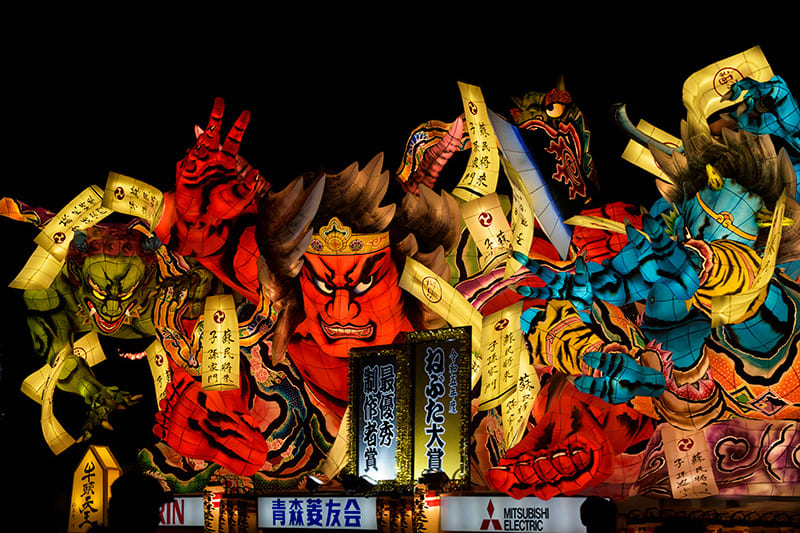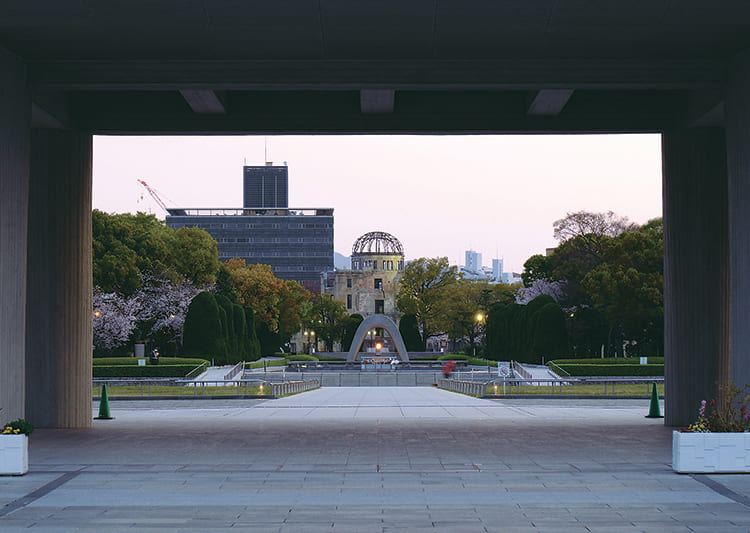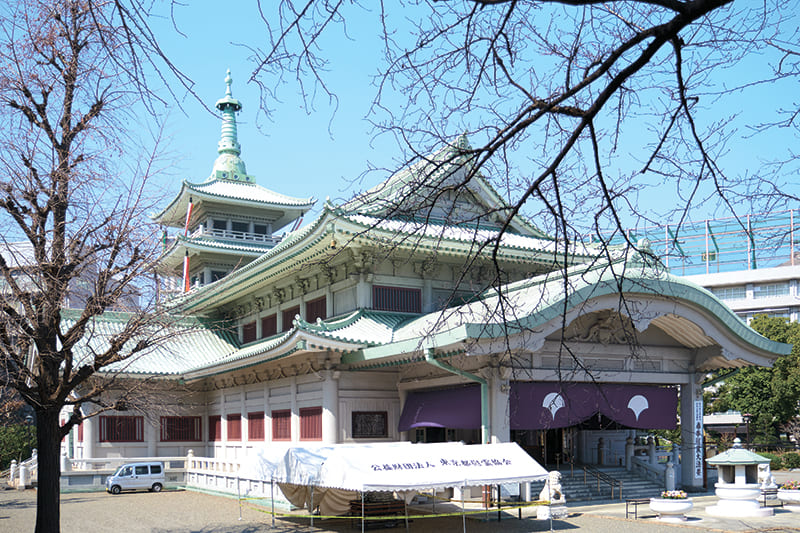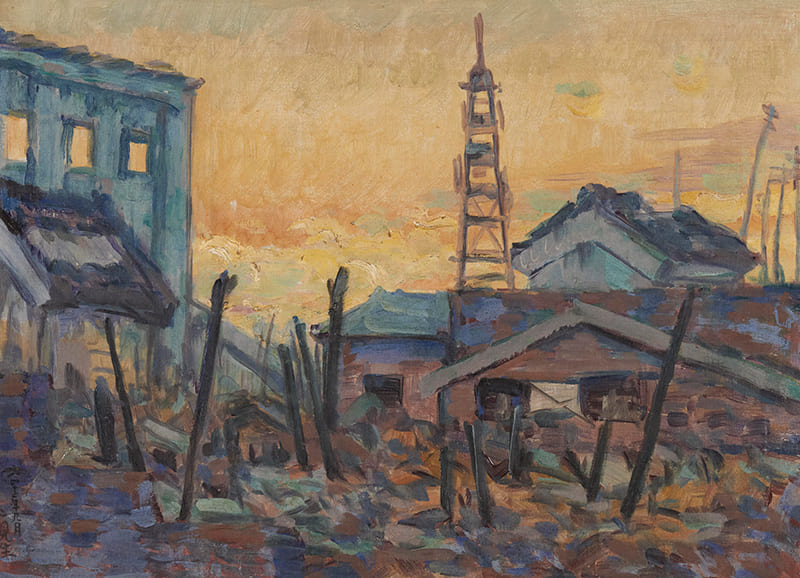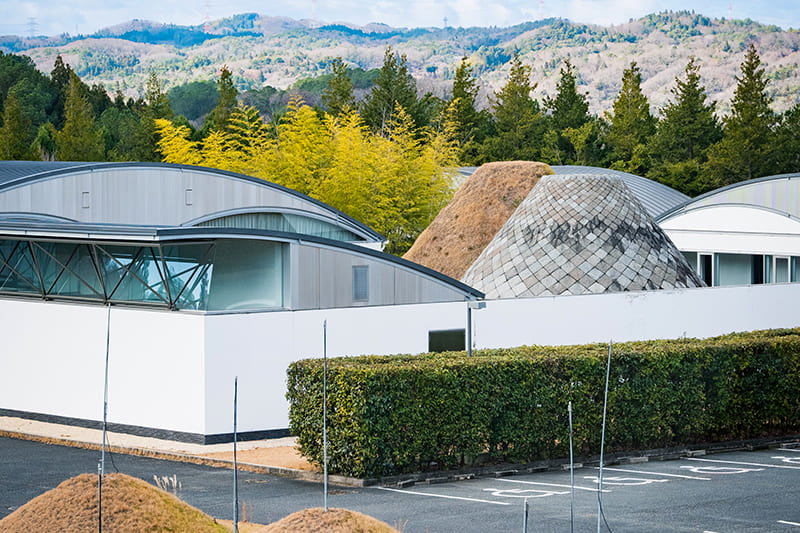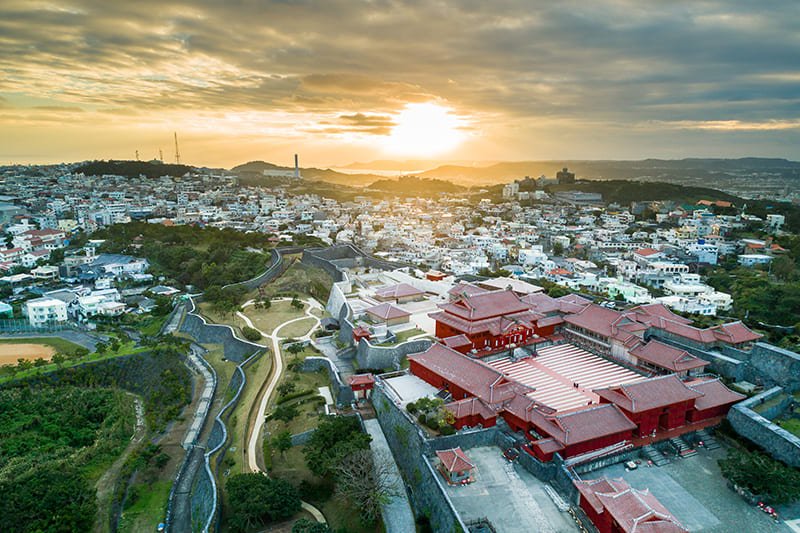April 28, 2022
Reconstruction tourism teaches disaster lessons
IWATE / MIYAGI
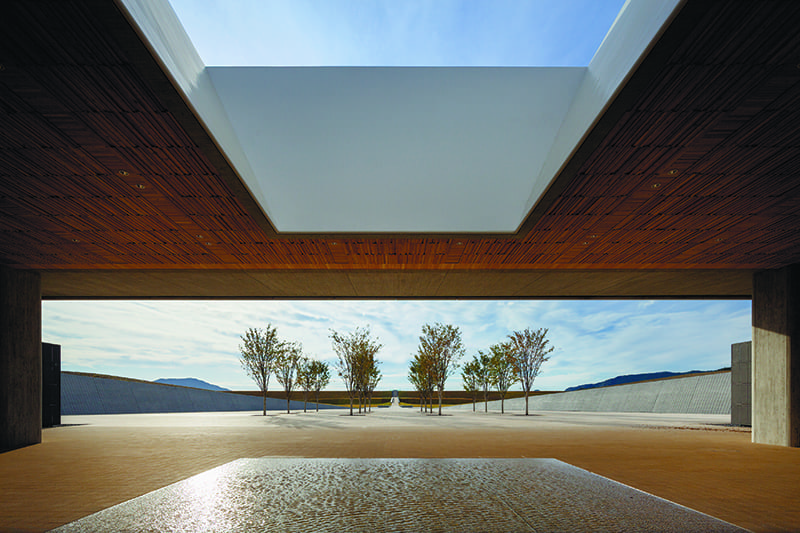
Takata Matsubara Tsunami Reconstruction Memorial Park
The national memorial facility opened in 2019. Both the facility and the surrounding park were designed by architect Hiroshi Naito
(in partnership with Prec Institute Inc.).
● 180 Dotekage, Kesen-cho, Rikuzentakata-shi,Iwate Prefecture
Iwate Tsunami Memorial Museum
Tel: 0192-47-4455
Open hours: 9:00 a.m. – 5:00 p .m.
Closed for New Year’s holidays
Admission: Free
https://takatamatsubara-park.com (Japanese only)
youth hostel torn in two. An overturned police station. A school with walls scorched black. All bear the scars of the tsunami triggered by the Great East Japan Earthquake on March 11, 2011, which claimed 19,684 lives — including 3,784 related deaths, such as those caused by illness or stress-induced suicides linked to the disaster — and left 2,523 people still unaccounted for. Such structures are being preserved and opened to the public as relics of the disaster to anchor the catastrophe in people’s memories. And now they are the focus of what is dubbed “reconstruction tourism,” which is attracting growing interest.
In partnership with local governments and other bodies, the Ministry of Land, Infrastructure Transport and Tourism’s Tohoku Regional Development Bureau has, as of February, registered as disaster memorial facilities 302 relics, monuments and exhibition facilities across the four Tohoku prefectures of Aomori, Iwate, Fukushima and Miyagi. Classified according to such characteristics as their accessibility and the presence of raconteur guides called kataribe, they are collectively known as the 3.11 Densho Road. The facilities in the network convey memories and facts about the Great East Japan Earthquake, along with lessons learned from the disaster. Minami Sanriku Hotel Kanyo in the Iwate Prefecture city of Minamisanriku is one of a number of hotels in the region that operate kataribe bus tours around tsunami-stricken towns and cities, during which hotel staff members recount their experiences of the disaster. Visiting the facilities and listening to the stories of people who personally witnessed the devastation enables tour participants to learn firsthand about the fearsome power of earthquakes and tsunami.
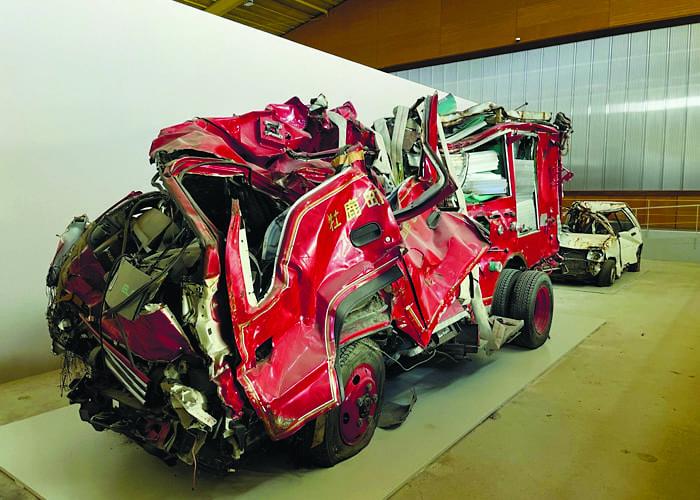
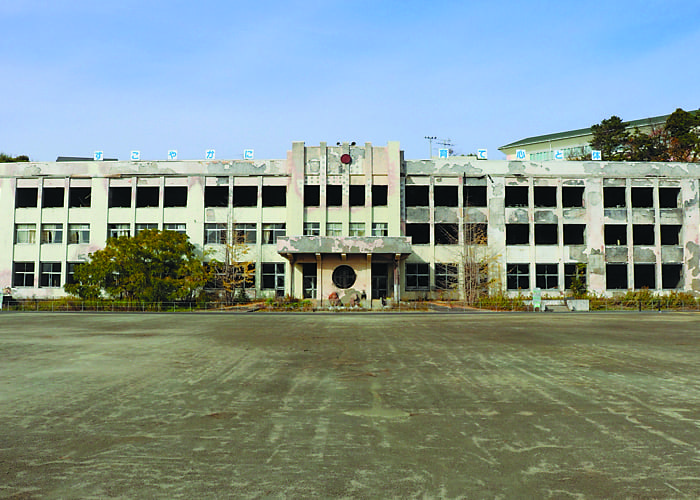
Inside what was Kadonowaki Elementary School’s gymnasium, several exhibits are testament to the force of the tsunami, such as this severely deformed firetruck. | COURTESY: ISHINOMAKI TSUNAMI RUINS
Kadonowaki Elementary School
Visitors can look around part of the building that once housed Kadonowaki Elementary School, which caught fire as a result of the tsunami.
● 4-3-15 Kadonowaki-cho, Ishinomaki-shi, Miyazaki Prefecture
Tel: 0225-98-8630
Open hours: 9:00 a.m. – 5:00 p.m.
Closed on Mondays and New Year’s holidays
Admission: ¥600
https://www.city.ishinomaki.lg.jp/ruins/index.html (Japanese only)
Particularly instructive are the sites of two elementary schools in the Miyagi city of Ishinomaki. At Okawa Elementary School, located about 4 kilometers from the coast, the pupils gathered in the schoolyard after the earthquake struck, but teachers were unsure what to do next, as no specific evacuation site had been determined beforehand. About 50 minutes later, just as the staff and pupils had begun evacuating to higher ground near the river, rather than the hill right behind the school, the tsunami surged over them, killing 74 children and 10 teachers and other staff members. In contrast, while Kadonowaki Elementary School was located just 800 meters from the mouth of the river, routine drills conducted in anticipation of a tsunami meant that staffers and pupils had practiced evacuating to the nearby Mount Hiyori. On the day of the quake, everyone evacuated in accordance with the drills, and not a single person from the school lost their life. These two contrasting examples teach us the importance of maintaining an awareness of danger even under normal circumstances and conducting drills to ensure preparedness before disaster strikes.
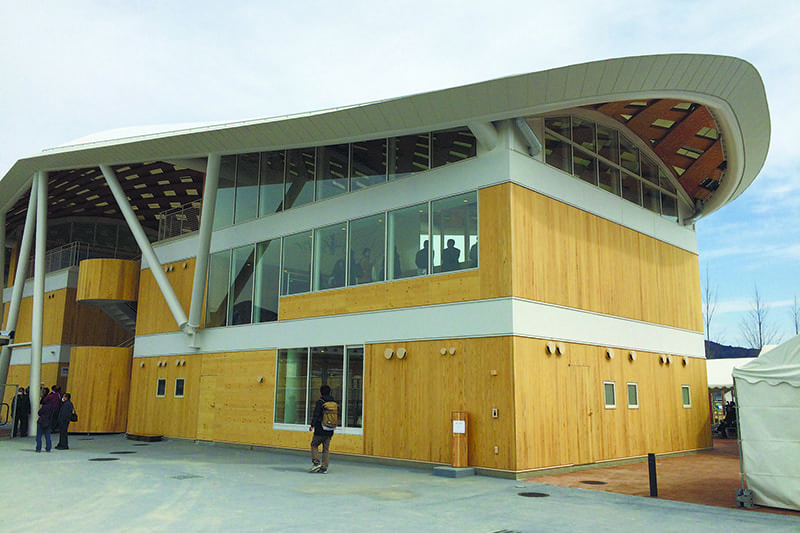
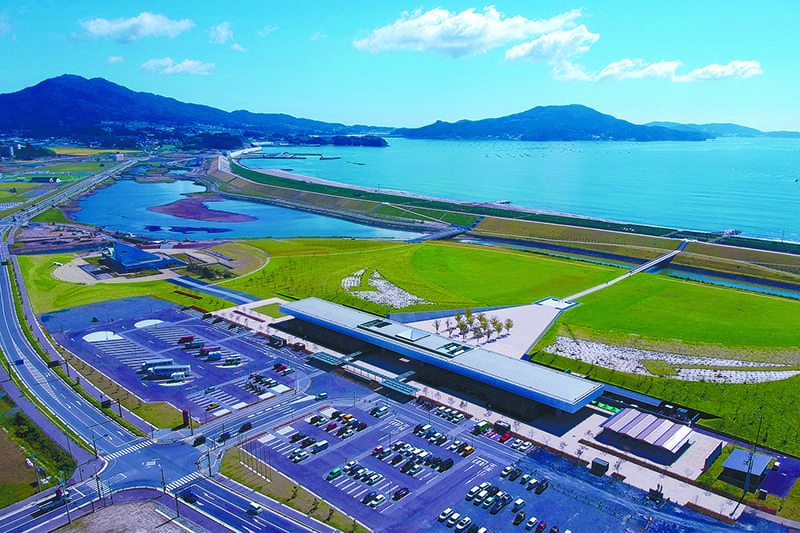
Another noteworthy point is the involvement of numerous renowned architects in post-disaster reconstruction and urban development. Among them are a number of winners of the Pritzker Architecture Prize, which is often described as the Nobel Prize of the architectural world, namely Toyo Ito, SANAA (the partnership between Kazuyo Sejima and Ryue Nishizawa) and Shigeru Ban, who all began working on temporary housing projects and community facilities soon after the catastrophe to support locals affected by the disaster. More recently, memorials and public facilities such as stations and schools have been created by leading Japanese architects as symbols of the region’s reconstruction. One example is the Hiroshi Naito-designed Takata Matsubara Tsunami Reconstruction Memorial Park in Rikuzentakata, Iwate Prefecture.
Japan is one of the world’s most seismically active countries. According to the 2014 White Paper on Disaster Management published by the Cabinet Office, 18.5% of the earthquakes with a magnitude of 6.0 or higher that were recorded across the globe between 2003 and 2013 occurred in Japan. The tsunami triggered by the 2011 mega-quake not only claimed human lives, but also destroyed buildings and infrastructure in a great many municipalities in the Tohoku region. The reconstruction process has reached the halfway mark, with urban development incorporating the disaster mitigation measures that are required for a sustainable society now underway. By providing opportunities to view relics of the disaster and various buildings that have become symbols of recovery, reconstruction tourism enables visitors to gain a deeper understanding of the catastrophe and subsequent response. In addition, participants in such tours have the chance to learn about urban development initiatives that are focused on disaster risk reduction, which is also relevant to the SDGs. Why not choose the disaster-affected areas of Tohoku for your next trip and experience a new form of tourism?
Onagawa Station / Yupoppo
The second floor of Ban’s station building, opened in 2015, houses a municipal hot spring facility
● 2-3-2 Onagawa-cho, Onagawa-shi, Miyagi Prefecture
Tel: 0225-50-2683
Open hours: 9:00 a.m-9:00 p.m.
Closed on third Wednesdays
Admission: ¥500
http://onagawa-yupoppo.com/ (Japanese only)
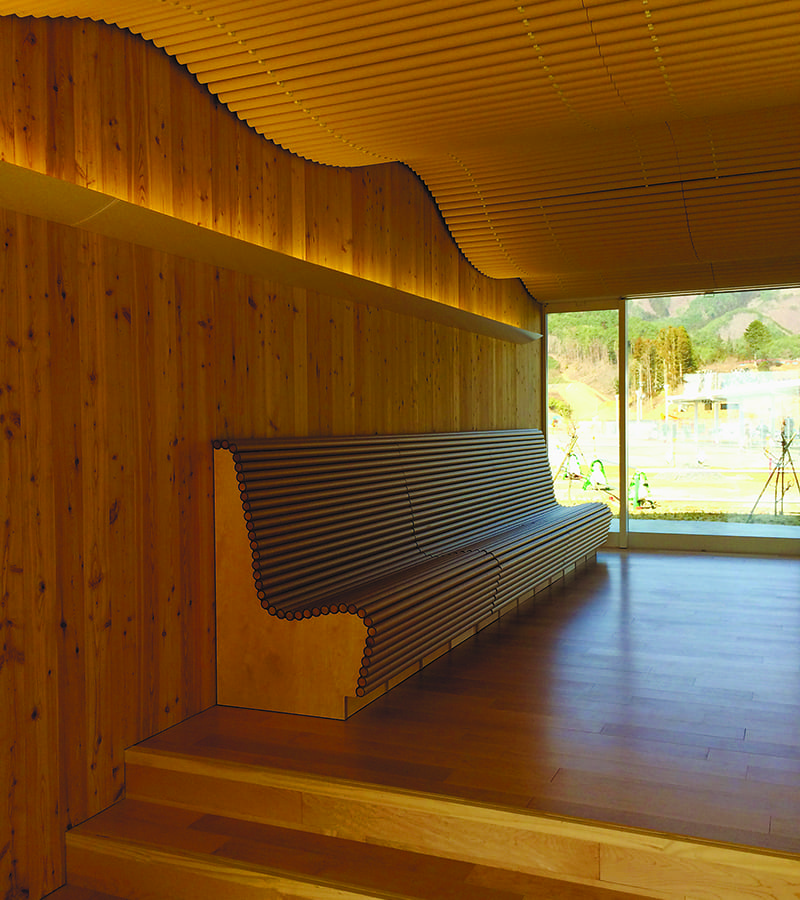
津波からの教訓を学ぶ、“復興ツーリズム”へ。
真二つに折れたユースホステル、ひっくり返った交番。2011年3月11日に発生した東日本大震災の津波の痕跡をもつ建物だ。震災の記憶をつなぎとめるために、こうした建物は「震災遺構」として保存・公開されているが、今、それを巡る“復興ツーリズム”が注目されている。
宮城県石巻市の2つの小学校跡の「震災伝承施設」は教訓的だ。旧・大川小学校では、具体的な避難場所は決められておらず、津波が押し寄せ児童74人、教職員10人が犠牲となった。対して旧・門脇小学校は平時から津波を想定した訓練を行っており、学校にいた児童と教職員全員が助かった。この二つの事例は普段からの危機意識、訓練といった事前防災の重要性を教えてくれる。
また、震災の復興に多くの有名建築家が関わっている点にも注目したい。岩手県陸前高田市の国営追悼・祈念施設を建築家・内藤廣が手がけるなど、日本を代表する建築家によって伝承施設や駅、学校などの公共施設が復興のシンボルとしてつくられている。新しい観光の一つとして東北の被災地を巡る旅はいかがだろうか。
Return to Sustainable Japan Magazine Vol. 11 article list page

